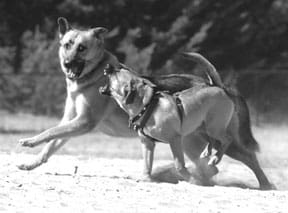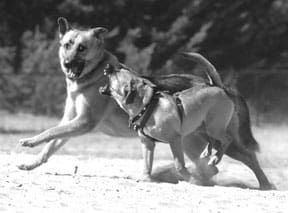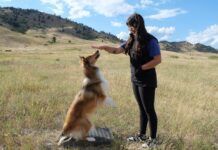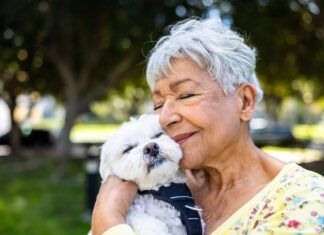
Play bows. Averted eyes. Tail wags. Flattened ears. Our dogs are not only masters at reading our body language, but also experts at sending messages with an incredibly expressive tool – their own bodies. If we humans were half as good at reading their signals as they are at reading ours, there would be a lot less miscommunication between our two species.
The fact is, most dog owners don’t see, much less recognize the basic grammar of dog body language. That’s why, when owners call me, asking for help with their dog following a bite, they almost always say, “The bite just happened out of the blue – there was no warning!” In most – if not all – cases, when I meet the dog, I see him giving plenty of indications that he’s stressed and/or uncomfortable, signs that to a more knowledgeable canine observer are obvious warnings that a bite may emerge in that dog’s near-future.
What’s worse, many owners who would recognize the more overt warning signs – growls and snaps, for example – have successfully suppressed those signs by previously punishing the dog when they occurred. So, in a way, they’re right – the dog didn’t hang up a flashing neon sign that he was about to bite, because he had already learned that it wasn’t safe to do so.
Dogs Talk with Their Bodies
The more you learn about your dogs’ subtle body language communications, the better you’ll be at reading them, so you can better manage his environment to prevent trouble. Is he tensing up, readying himself for a battle to defend himself against a perceived threat? Or is he playfully anticipating a romp with a canine pal he enjoys roughhousing with?
It’s important that you not focus on just one piece of the message. The various parts of your dog’s body work together to tell the complete story, and unless you read them all, you’ll be missing out on important elements of the equation. You want to be especially aware of the ears, eyes, mouth, tail, and the dog’s body posture as the important pieces of the whole puzzle.
Because canine communication is a constant flow of information, it’s sometimes difficult to pick out small signals until you’ve become an educated observer. You can start by studying photographs of dog body language, then watching videos that you can rewind and watch repeatedly, and finally honing your skills on live dogs. Dog parks, doggie daycare centers, and training class playgroups are ideal places to practice your observation skills.
In the next few months, we’ll show you a few photos that exhibit some basic “expressions” in canine body language. But in this first installment, we’ll give you an opportunity to “translate” the photos on these two pages, using the grammar key on the next page. Jot down your observations of the key body parts visible in the photos; next month, you can compare your answers to this “What are the dogs saying?” activity to our translation.
A note about the photos: Most were taken at dog parks. Some of the dogs are wearing collars, harnesses, or other training gear we don’t like; more importantly, we don’t like to see any extra gear on dogs who are playing in groups. It’s too easy for dogs to get caught in each other’s gear.







Article states opportunity to “translate” the photos on these two pages, using the grammar key on the next page. Yet there is NOT a place on this page to look at the photos. Bummer. This happens quiet often in WDJ.
“we’ll give you an opportunity to “translate” the photos on these two pages, using the grammar key on the next page. Jot down your observations of the key body parts visible in the photos; next month, you can compare your answers to this “What are the dogs saying?” activity to our translation.”
Where’s the photos? WDJ is becoming a disappointment. It’s not the first time this has happen. Organizations live and die by the quality and message in their websites. Where’s the quality control?
Article Published: October 5, 2005
Updated: April 23, 2019
Linked on an article 7 May 2020.
Publishing dead links, or partial links demonstrates poor quality control.
Where’s the photos? WDJ is becoming a disappointment. It’s not the first time this has happen. Publishing dead links, or partial links demonstrates poor quality control.
Thinking WDJ is just becoming a front to push other user pay add-ons, courses, articles, etc.
Where are the photos? There is no “More example” link anywhere on the screen. It’s great that WDJ promotes the chance to increase & test our knowledge but only if that offer is available. I hope WDJ is not just another bait & switch website.